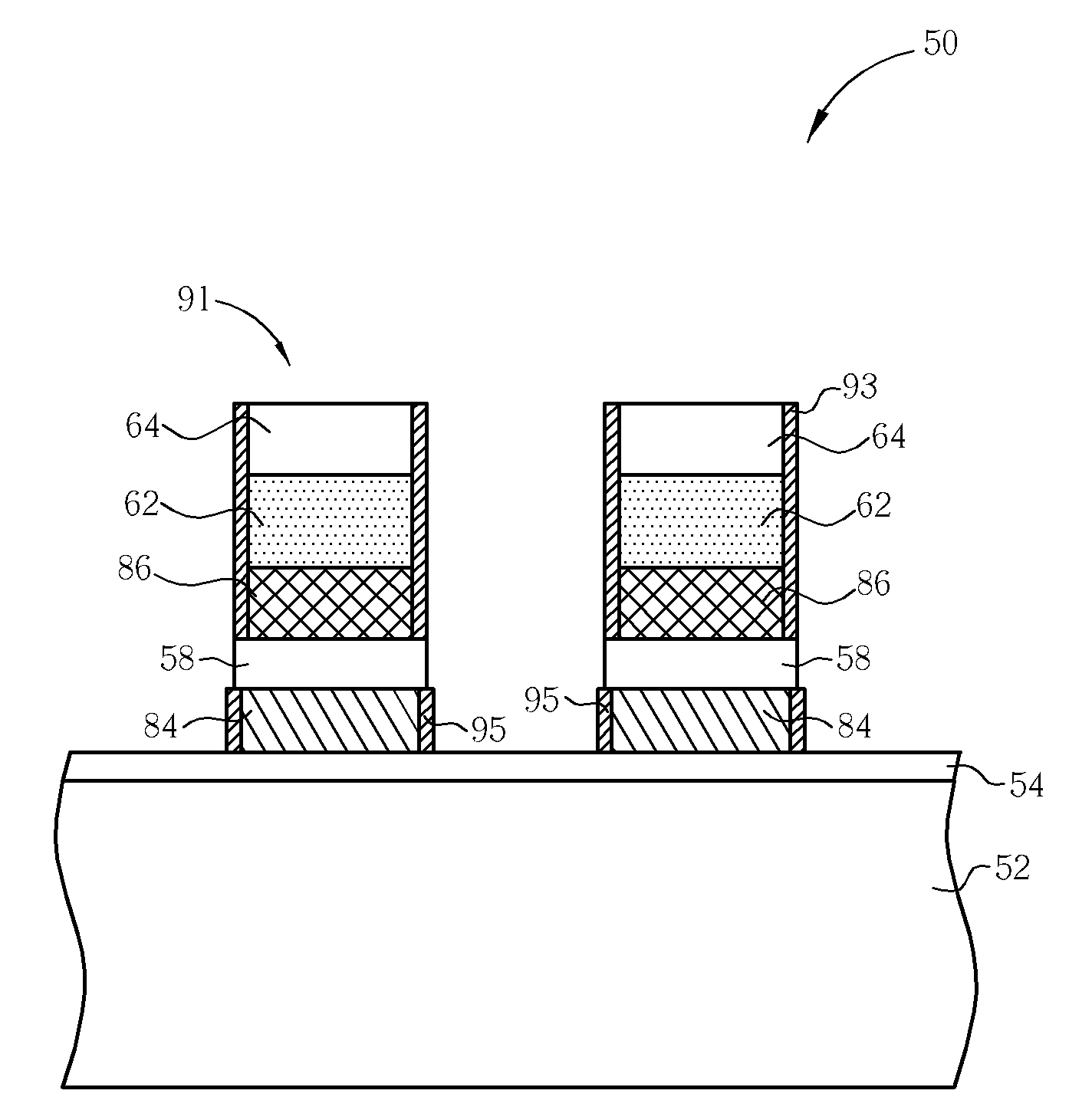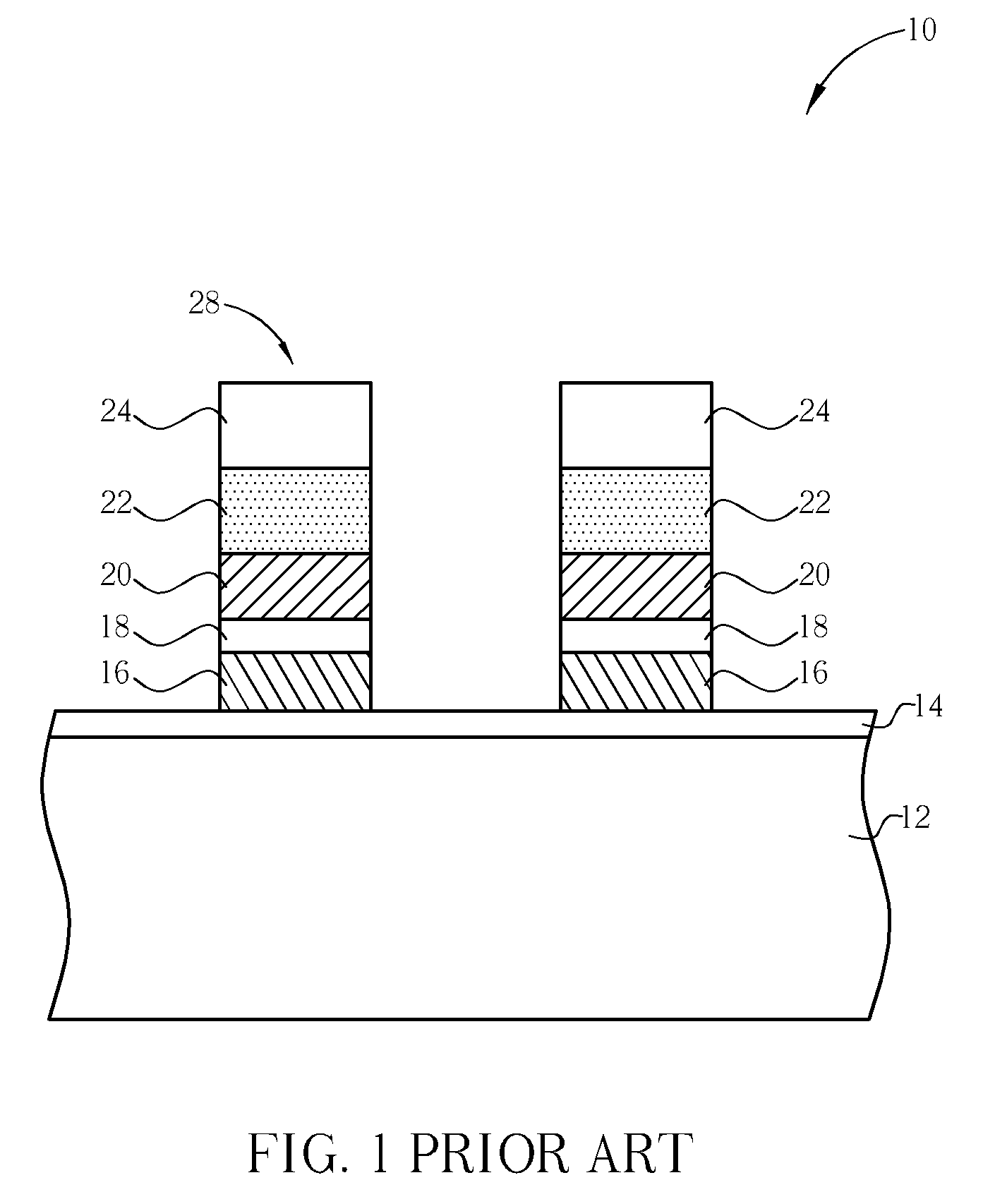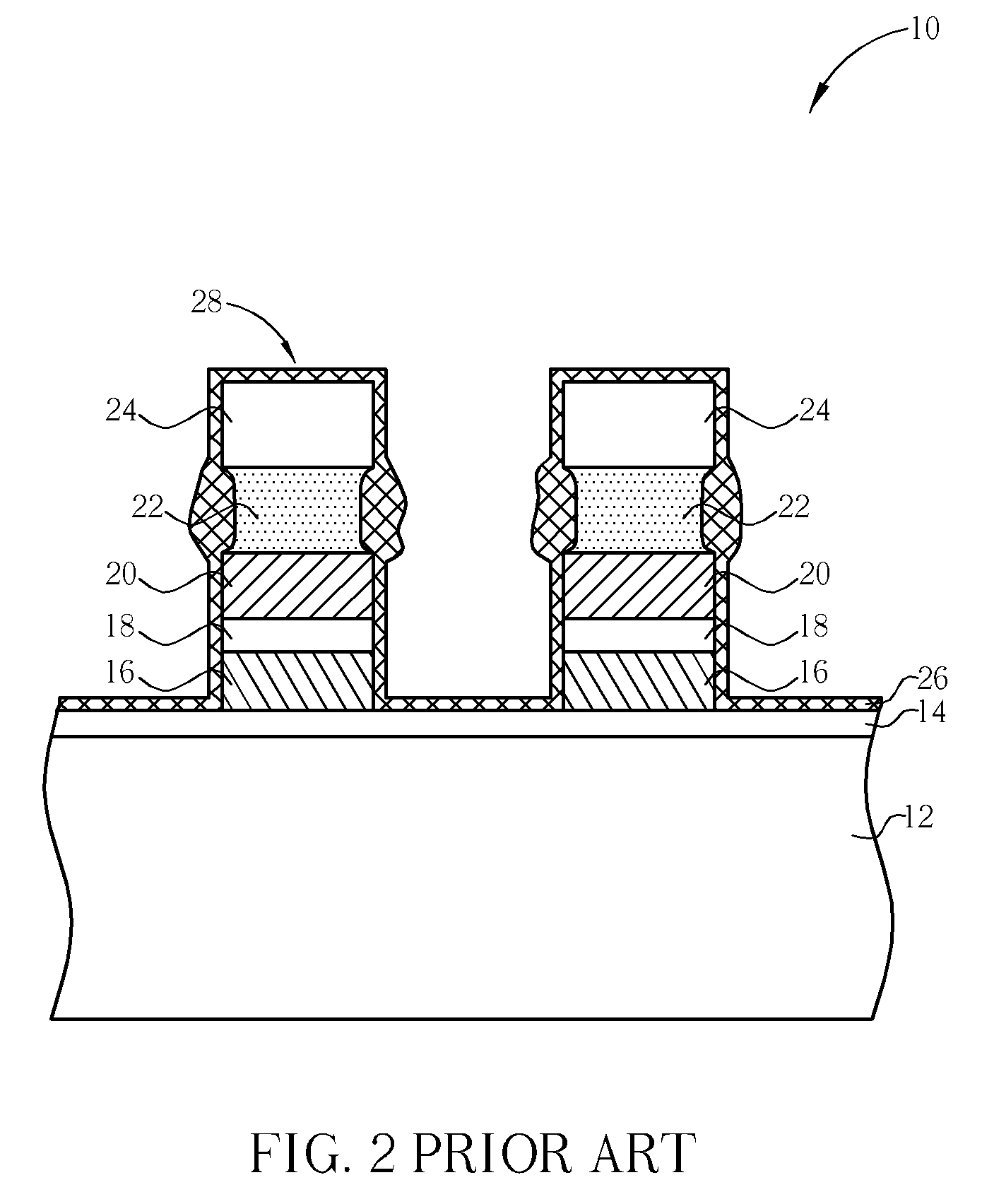Method of fabricating flash memory
a technology of flash memory and stacked structures, applied in the direction of basic electric elements, electrical equipment, semiconductor devices, etc., can solve the problems of reducing adhesion, reducing the adhesion, and oxidizing the sidewall abnormally, so as to improve the silicon/tungsten distribution ratio and improve the word line resistan
- Summary
- Abstract
- Description
- Claims
- Application Information
AI Technical Summary
Benefits of technology
Problems solved by technology
Method used
Image
Examples
first embodiment
[0016]Referring to FIGS. 3-8, FIGS. 3-8 are process schematic diagrams of the fabrication method of a flash memory 50 according to the present invention. The present flash memory 50 is a stack-gate flash memory. First, as shown in FIG. 3, a semiconductor substrate 52 is provided, which may be a silicon substrate. An oxidization process is carried out to form an oxide layer on the surface of the semiconductor substrate 52, wherein the oxide layer serves as a floating gate insulating layer 54. Then, a floating gate material layer 56, a dielectric layer 58, a control gate material layer 60, a silicide layer 62, and a hard mask layer 64 are successively formed on the surface of the semiconductor substrate 52. The floating gate material layer 56 and the control gate material layer 60 preferably comprise polysilicon material layer respectively, and the silicide layer 62 may comprise tungsten silicide material. The hard mask layer 64 may comprise silicon nitride material, while the dielect...
second embodiment
[0021]FIGS. 9-12 are process schematic diagrams of the fabrication method of a flash memory according to the present invention. Some devices in FIGS. 9-12 are indicated by the same numerals as those used in FIGS. 3-8 for simplifying the description, and FIG. 9 illustrates a subsequent process and structure profile of the flash memory 50 of FIG. 3. A floating gate material layer 56, a dielectric layer 58, a control gate material layer 60, a silicide layer 62, and a hard mask layer 64 are successively formed on the semiconductor substrate 52, wherein the dielectric layer 58 may be an ONO dielectric layer or a NONON dielectric layer. Then, as shown in FIG. 9, an photolithography process is performed to pattern the hard mask layer 64 so that the hard mask layer 64 has at least a control gate pattern 87. Sequentially, the patterned hard mask layer 64 is taken as a mask for performing an etching process to the silicide layer 62 and the control gate material layer 60 until the top surface ...
PUM
 Login to View More
Login to View More Abstract
Description
Claims
Application Information
 Login to View More
Login to View More - R&D
- Intellectual Property
- Life Sciences
- Materials
- Tech Scout
- Unparalleled Data Quality
- Higher Quality Content
- 60% Fewer Hallucinations
Browse by: Latest US Patents, China's latest patents, Technical Efficacy Thesaurus, Application Domain, Technology Topic, Popular Technical Reports.
© 2025 PatSnap. All rights reserved.Legal|Privacy policy|Modern Slavery Act Transparency Statement|Sitemap|About US| Contact US: help@patsnap.com



